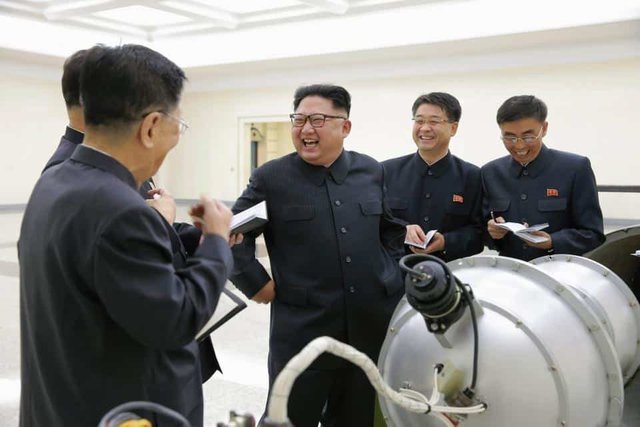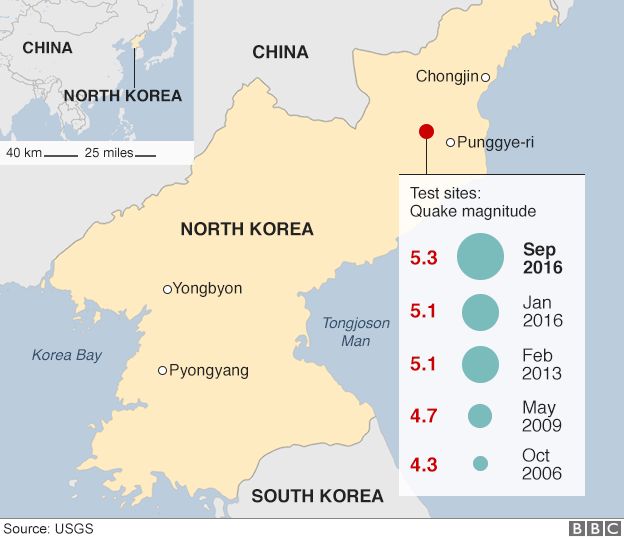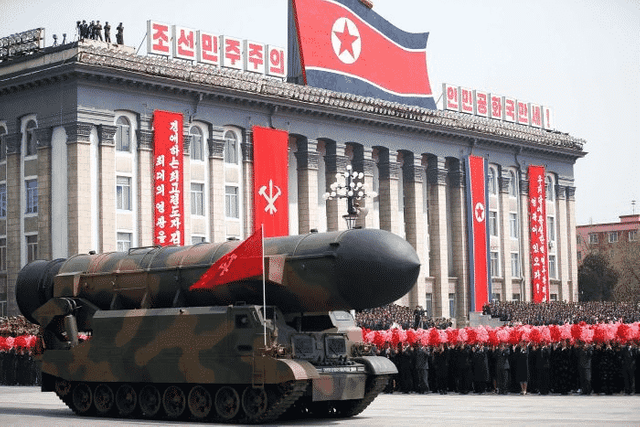The Stalking Danger of North Korea

North Korea's nuclear program remains a source of deep concern to the international community. Despite several efforts to reduce it, the Pyongyang government says it has already carried out five nuclear tests.
Is North Korea really a threat?
Technically, yes. North Korea has carried out several nuclear bomb tests.
However, to launch a nuclear attack on its neighbors, it needs to be able to make a nuclear warhead small enough to fit into a missile.
While North Korea claims to have "miniaturized" nuclear warheads successfully, international experts have long been skeptical about such claims.
However, according to information leaked to the Washington Post in August 2017, US intelligence officials now believe that North Korea is indeed capable of miniaturizing warheads.
How powerful are North Korea's nuclear bombs?

North Korea says it has conducted five successful nuclear tests: in 2006, 2009, 2013, and in January and September 2016, and the power of the bombs seems to have increased with each test.
The September 2016 test indicated a device with an explosive yield of between 10 and 30 kilotonnes - which, if confirmed, would make the nuclear test stronger in the North.
The other big question is whether the devices being tested are atomic bombs, or hydrogen bombs, which are even more powerful.
Hydrogen bombs, or H-bombs, use fusion - the junction of atoms - to trigger huge amounts of energy, while atomic bombs use nuclear fission or the division of atoms. The tests of 2006, 2009 and 2013 were all tests of atomic bombs.
North Korea said the January 2016 test was that of a hydrogen bomb.
But experts cast doubt on the claim given the size of the blast recorded.
Plutonium or uranium?
Another question would be to discover the starting materials for the nuclear tests. Analysts believe the first two tests used plutonium, but it is unclear whether North Korea used plutonium or uranium as the starting material for the 2013 test.
A successful uranium test would mean a significant leap in North Korea's nuclear program. North Korea's plutonium stocks are finite, but if they could enrich themselves with uranium, they could build a nuclear stockpile.
Enrichment of plutonium should also happen in large, easy-to-detect facilities, while uranium enrichment can be more easily performed in secret.
Could North Korea really launch its nuclear weapons?
There is no consensus on the situation in North Korea in terms of miniaturizing a nuclear device so it can be launched through a missile.
According to information leaked to the Washington Post, US intelligence officials now believe North Korea has the technology to fit its missiles with nuclear warheads.
The Japanese Ministry of Defense also recently stated that this is a possibility.
The new assessment comes weeks after North Korea tested what it said was an intercontinental ballistic missile capable of reaching the American continent. While analysts doubt Pyongyang's claim, most experts agree the missile may reach Alaska or Hawaii.
What else do we know about North Korea's nuclear program?
A site in the mountains near Yongbyon, north of Pyongyang, is considered to be North Korea's main nuclear facility, while the January and September 2016 tests were conducted in Punggye-ri.
The Yongbyon site processes spent fuel from power plants and has been the source of plutonium for North Korea's nuclear weapons program.
Both the United States and South Korea have also said they believe North Korea has additional areas linked to a uranium enrichment program. According to them, the country has abundant reserves of uranium ore.
What has the global community done about it?

The US, Russia, China, Japan and South Korea contacted North Korea with a number of talks. There have been several attempts to consent to disarmament agreements with North Korea, but none of this has deterred Pyongyang.
In 2005, North Korea agreed to a historic agreement aimed at giving up its nuclear ambitions in exchange for economic aid and political concessions. In 2008, North Korea eliminated cooling tower in Yongbyon as part of the aid disarmament agreement.
But implementation of the agreement proved difficult and negotiations stalled in 2009.
The US never believed that Pyongyang was completely shutting down all its nuclear facilities - a suspect reinforced this re-alignment when Korea